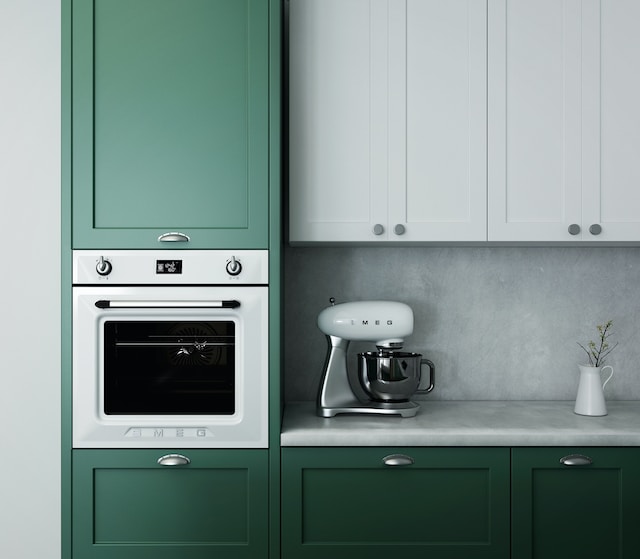Eliminating mould from your bathrooms in Glasgow is critical, as toxic black mould spores can wreak havoc with breathing issues in those with allergies or asthma. Not all mould spores are black, though; there may also be white, yellow, or green varieties present, as well as other colours altogether.
1. Bleach
Bathrooms in Glasgow as nice as they are unfortunately provide the ideal environment for black mould to take hold, making removal very challenging without professional assistance. In general, most types of mould can be removed and eliminated using bleach and some elbow grease at home.
As always, when using bleach, it’s essential to wear rubber gloves and ventilate the area thoroughly during cleaning. A face mask may also help if necessary if fumes become an issue; otherwise, follow all instructions listed on your bottle to effectively kill mould.
White vinegar can also provide an effective and cost-effective way of killing off mould in the ceiling of your bathroom. Simply mix it with water in a spray bottle and apply directly, leaving it on for around an hour before scrubbing away the product.
While using this solution to clean non-porous surfaces like tiles and walls, you should also use it to get rid of stains on these non-porous surfaces like tiles and walls. Please keep in mind that if mould has made its way into grout or silicone sealants, replacement might be required, and professional services might be needed for that task.
2. Vinegar
Mould spores can be found all throughout the environment and quickly settle on surfaces indoors, particularly bathrooms, where warmth, darkness, and dampness create ideal conditions for growth. Luckily, there are multiple effective strategies available to quickly eradicate black mould infestations.
An equal mix of white vinegar and water can be used to effectively eliminate mould growth on surfaces. Allow it to sit for approximately an hour, then wipe it away with a cloth or scrub brush. For stubborn areas, use a coarse brush or even an old toothbrush for more targeted cleaning. When performing cleaning, it’s wise to wear rubber gloves, a face mask, and safety glasses in case any of the chemicals release fungal spores or fumes that might harm you or someone nearby.
Dr. Jones recommends cleaning one area at a time and spraying regularly to prevent mould regrowth. She also suggests opening windows for ventilation purposes and wiping surfaces with a microfiber cloth or sponge. Furthermore, ensure your toilet seat lid and curtain do not remain damp, as this provides ideal conditions for black mould to grow.
Michael Rubino, an air quality and fungus expert, suggests non-porous surfaces like tile, walls, and countertops can be treated with antifungal surface cleaners such as Clorox (available on Amazon). He further suggests washing fabrics like towels and curtains in hot water with bleach while adding one cup of white vinegar to the wash cycle; this helps avoid unpleasant fabric odours while effectively killing any black colouring that might remain.
3. Borax
Mould thrives in warm, damp places, such as your bathroom. You might spot mould growing on walls, tiles, and grout that is difficult to get rid of; its presence can even pose health concerns like breathing difficulties and immune system impairment, according to the NHS.
Mould can be avoided and removed with ease by following some simple measures. Ventilation is the cornerstone of mould prevention. Make sure your bathroom windows are opened several times each day for at least 10 minutes to allow air circulation and dry the space out more thoroughly. An electric fan may also prove helpful, particularly if you shower or bathe regularly.
If the mould infestation is limited to one small patch, bleach and water solutions may help you clean it off effectively. Be sure to wear eye protection, gloves, and a face mask during this process while leaving windows open so as to reduce fungal spore release during this process.
If the mould problem is more extensive, such as on tiles or drains, a more robust approach may be needed. Mix borax and bleach together for an effective cleaner that you can spray directly onto affected surfaces or use on tile or vinyl floors as a surface cleaner.
4. Natron
Bleach may be effective at killing mould and mildew, but its toxic substances can be dangerous to use and inhale. Furthermore, its fumes can be inhaled, which poses risks and should only be used in well-ventilated spaces. A more natural alternative would be Natron, which acts as a powerful antifungal agent and is available from supermarkets and chemist shops. Use it by mixing it with water into a paste and applying it directly onto surfaces like grout to remove black mould spores—even grout! It can also clean textiles such as towels and bath mats from spores while leaving sensitive surfaces like marble unscathed!
As part of an overall strategy to avoid mould, bathroom ventilation must be prioritised. To do this, open windows several times daily for 10 minutes each time or use an electric fan to circulate air. Towel drying after showers or baths may help lower humidity levels further.
If your bathroom features extensive mould growth on tiles and grout, re-grouting could be necessary. Unfortunately, if mould has made its way deep into either grout or silicone, it may be impossible to fully eradicate; in such instances, it will likely need replacing altogether.

